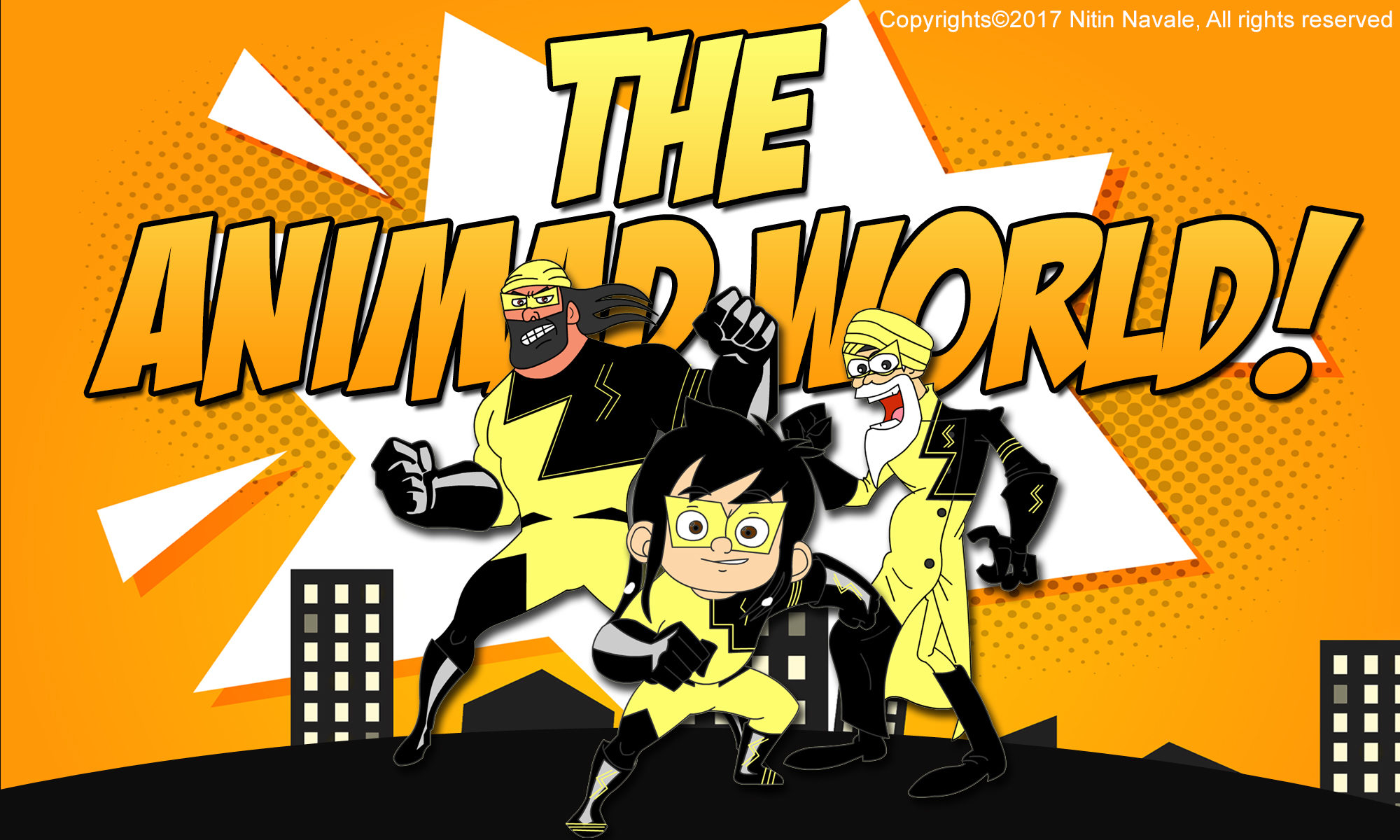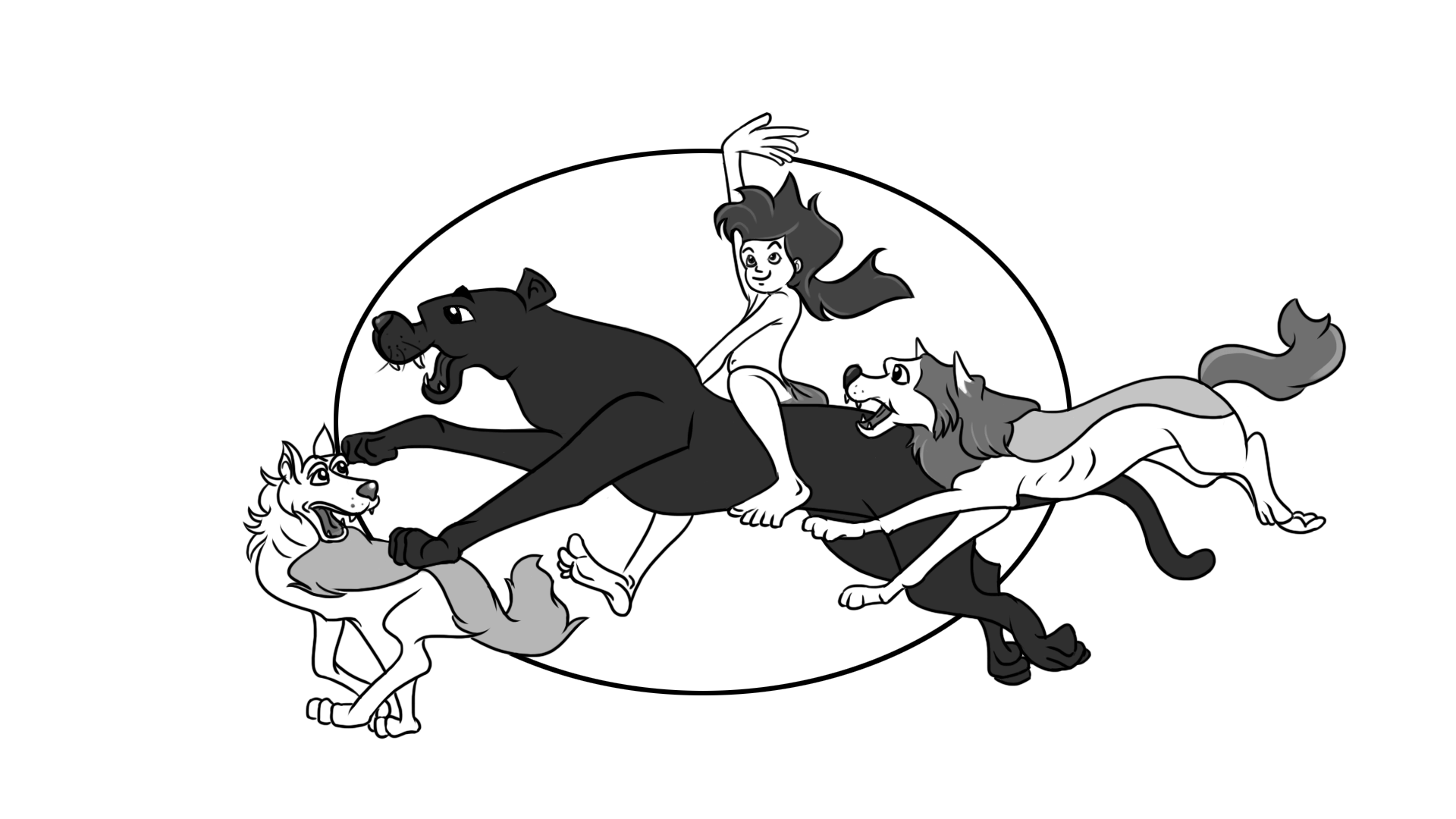The Funny Side of Indian Animation Industry: Advice for budding artists for getting into Indian animation.
Finding jobs in the Indian animation industry can be challenging. And if you are an aspiring, young Indian animator, life isn’t fun for you at all. Just a few years ago, you had a dream of a glamorous, fascinating, playful career in your heart. You nurtured it, you believed it, and most of you had also achieved it by getting a job in a studio or company.
Bingo! You had your dream come true, experiencing the best day of your life. Finally, you have proved to the world, especially your parents, that you can face the world on your own without knowing that flames of delight will diminish quickly. And if you haven’t experienced it yet in your life, then ask your dream to wait for some time.
How much? Well, it could be a day, a month or years, who knows? It’s a funny business, after all. Anybody who works in the indian animation industry like I do or will tell you to reconsider your career prospects if you still have time in your life.
But I know it isn’t that easy when you have so much passion for this field. You have always envisioned yourself as an animator or an artist. And more than anything else, you have to recover those green bucks invested in self-proclaimed 100% job guarantee institutes and animation programs.
So what to do now? Well, in my opinion, and many experience talented animators that I work with, we have quite a few options with us to deal with it:-
 •1) Change the field: –
•1) Change the field: –
If you are not passionate enough about animation, this isn’t a thing for you in the first place anyhow. So the wisest thing to do for you probably will be to pack your bags and move on.
Find your true passion and work on it. You have nothing to lose here except those green bucks, but once you find your true love, money won’t matter at all, and you will earn it back in no time without much effort.
 •2) Keep patients: –
•2) Keep patients: –
If there isn’t anything much you can do about it, then the best thing is to hang on and wait for the tide to turn. Especially when you don’t have added responsibilities on your shoulders.
Spend your time learning more about this art and try to improve each and every day. If possible, spend few more bucks on those reputed animation programs available online.
Many of them can give you valuable insight into this market. It also helps you increase your network on the international circuit. So keep patience and play the waiting game and remember, “Patience is bitter, but its fruit is sweet.
 •3) Be the change: –
•3) Be the change: –
As the famous quote from Mahatma Gandhi goes and I quote,
“You have to be the change you want to see in the world.”
Why Is Indian Animation Bad?
Why did I start this blog?
Some time ago, I felt the urge to expand my knowledge about Indian Animation and was shocked to see that there is no single book available so far on this topic. So, I decided to write one, titled “Indian Animation and The Faults In Our Art.” But unfortunately, it didn’t get any publishing deal due to the nature of the subject. So instead of going to a self-publishing route, I thought of converting the content into this blog so that it can reach the maximum number of people for free, and I can always keep on updating it with changing times.
Now the vital question? Why did I write my unpublished book in the first place? Well, that’s because, over the years, I have witnessed that Indian Animation has not made enough progress to make a mark in this world.
You see, the animation is undoubtedly the most flexible form of film-making with the ability to go beyond the expected. But when it comes to India, we are still struggling to get the basics right, we are still struggling to understand the true potential of this medium, and most importantly, we are still struggling to embrace the art of animation.
And the most crucial question is, “Why?”
Why countries like the USA, Japan embraced this art and have managed to turn this medium into full-fledged family entertainment. Whereas in India, it is still looked down on as purely a children’s genre and is ignored by almost all adults. But more importantly, why don’t we shy away from investing our time and money into watching International films like Kung-fu Panda, The Incredibles, but won’t even think of walking into the theater to watch domestic Animated movies?. What makes Disney, Pixar, and Ghibli so successful. And what is that we need to adopt from them to grow and prosper in terms of art, style, commerce, and entertainment.
Through this series of articles, we will explore answers to all these questions and debunk the mysteries behind the success of western and Japanese animated films and the struggle behind our industry. With each chapter or article, we will look at some fundamental and deeply rooted faults in Indian content, things that have worked for us, and things that have led to the downward slope of the art of animation.
As an animator, as a writer, and more importantly, as an audience, my intention behind writing this book or blog is to help the budding generation of artists, industry professionals, and everyone interested in the medium to learn from our past, fix our present, and take a leap into the future. And hopefully, together, we can support our beloved art to earn a respectable place in the business of family entertainment.
When you read these articles, read them as if you are reading a book. I have divided the section into three major parts:
-The Past:
Here, we will witness the journey of Indian animation and what worked and did not work for us.
-The Present:
Here, we will analyze the current state of our art and the reasons for its downward curve.
-The Future:
Here, we will discuss the destiny of our art, and I will share some vital bits of advice for budding artists that will help them to thrive in this industry.
Each section has some interesting chapters mentioned below.
THE PAST: And the Story of our Art!
-Chapter One: The Brief History: And the rise and fall of Indian Animation.
In this chapter, we will shed some light on the journey of Indian animation, right from its inception in shadow forms to the silver screen, and learn about the people who contributed towards making this industry what it is today.
-Chapter Two: The Jungle Book: And what makes it the best show ever?
The Jungle Book is undoubtedly the most popular show in the history of Indian Animation. In this chapter, we will learn about its impact on our generation and what made it so successful.
-Chapter Three: Ramayana: And the struggle to release it.
Like the hugely popular Tv show Ramayana, the animated movie brought a revolution in Indian Animation. In this chapter, we will learn about the struggle behind making this movie and the sacrifices the creators of this movie made to release it.
-Chapter Four: Chhota Bheem: And what makes it so big?
Chhota Bheem is another household name, but have you ever wondered what makes it so big? In this chapter, Let’s look into the psychology of Chhota Bheem and reveal the secrets behinds its fame.
-Chapter Five: Hanuman: And the art of the appeal. Part 1.
This movie instantly made an impact on our viewers, and in these chapters, we are going to decode some of the secrets behind its success with the help of animation principles.
-Chapter Six: Hanuman: And the art of the appeal. Part 2.
This chapter will continue to explore fundamental animation principles that will help our readers to know the groundwork it takes to create these beautiful illusions of lives.
-Chapter Seven: Roadside Romeo: And what went wrong?
The stage was set for Roadside Romeo, and it was released with huge expectations, but unfortunately, everything went downhill. So in this chapter, we will explain what the makers of this should have learned from their famous movie DDLJ.
The Present: And the Faults in our Art!
-Chapter Eight: The Audience: What is an art without its audience?
And this chapter will focus on the roles our viewers can play to bring the change we want to see.
-Chapter Nine: The Story.
In the end, it all comes down to a story that can make or break the art. So in this chapter, we will learn about the fundamental issues with our storytelling and what we can do to improve it.
-Chapter Ten: The Sense of humor:
Animation and comedy go hand in hand, but for some reason, our shows seem to be deprived of humor. So let us learn some tricks and tips that could put a smile on our kid’s faces and know the secrets behind the funny business of western animation.
-Chapter Eleven: The Missing Link:
This mysterious ingredient is one major reason our animation lags in many aspects. If we can manage to implement it soon, we will have Indian animation spreading on the global stage.
-Chapter Twelve: The Copy of a Copy:
Another factor why Indian animation doesn’t hold high standards in the eyes of our adult audiences. So in the chapter, let us learn the art of stealing and implementing it wisely without getting caught.
-Chapter Thirteen: The Women Power:
When the whole world is advocating for equal opportunities. But animation still seems to catch up in this department despite the need for women’s participation has been more than ever before. So in this chapter, let us reflect on women’s working conditions in the animation industry and the need for their empowerment.
-Chapter Fourteen: The Budget:
This is one major hurdle keeping our art behind. So let’s have a look at some of the examples and see how much we really spend on animation as compared to Hollywood.
-Chapter Fifteen: The Right Education.
This is where the problems begin. So let us analyze the issue behind it.
The Future: And The Destiny of our Art
-Chapter Sixteen: STAY ANIMATED STAY MOTIVATED.
- The Passion.
- The Inspiration.
So here we go.
I will update this blog as and when possible, and soon, I will convert it into a free ebook. So do make sure to subscribe by filling the form below for tons of free content and, more importantly, helping our art leave a mark in the world of family entertainment.
CHP TWO: THE JUNGLE BOOK AND WHAT MAKES IT THE BEST SHOW EVER?
|
 Adapted from Rudyard Kipling’s book and directed by Fumio Kurokawa, “The Jungle Book” debuted on Indian television in the year 1993. An era hanging on the doldrums of an imbalanced economy, communal violence, and filthy terrorism.
Adapted from Rudyard Kipling’s book and directed by Fumio Kurokawa, “The Jungle Book” debuted on Indian television in the year 1993. An era hanging on the doldrums of an imbalanced economy, communal violence, and filthy terrorism.
And amid this massive burning cauldron, in the monsoon of July 1993, our houses echoed with a delightful song written by the great Gulzar, the title song of the series “Jungle Jungle baat chali hai, pata chala hai.” It was a much-needed escape from the series of depressing events that engulfed our nation at that time. The song brought a sense of optimism and cheerfulness amongst the people, specifically children, during a challenging time in Indian history.
By that time, many great Disney and Warner Bros shows were already running successfully. Still, none of them were able to instantly resonate with us, and profoundly influence a generation like The Jungle Book. It was a show that brought the families together and made Sunday afternoon the best time of the week. Soon Mowgli became a common household name and an integral part of our pop culture.
So what’s it’s about The Jungle Book specifically, that it was able to touch us in such a way that no other show can recreate the magic to date?. What was it about this show that made every child of our generation, wanting to run with the wolves, learn the language of every species, and climb on Bagheera’s back to jump over the cliff despite its secrets and dangers?
Well, It’s easy to guess it on the surface level, as it’s an entertaining show about a wild Indian boy who swings across the forest in his shorts along with his animal friends and their adventures in the wilderness in the midst of fighting the cunning and cruel tiger. For kids, that was more than enough reason to watch it, but on a deeper level, it was a show filled with great philosophical knowledge, values and was no lesser than a self-help book. At its core, it’s a story about growing up, maturing, learning more about the world, finding new friends, and, more importantly, finding yourself.
In other words, it was an excellent metaphor for our lives. Yes, the forest represented the concrete jungle we stay in. The animals represented our friends and families who care for us and protect us. The nemesis waiting in ambush posed the obstacles and problems we face, and the misfit protagonist represented “US,” lost into the unknown striving to survive. Just like Mowgli, we all face issues like growing up, we all feel like an odd one in the pack of wolves, and we all struggle to find our true identity always trying to adjust according to our environment in the vast civilized jungle.

The series did a fantastic job of showcasing the human values through these animals, and with great subtlety, provided various practical solutions for the dilemmas we face in our daily lives. It showed us the importance of finding our true self, and how everyone has some unique talent and skillsets, which we need to figure out to persevere in this world.
At the same time, it taught us the significance of family bonding, the sacrifices we need to make, staying true to our words and commitments, respecting the law, dealing with the loss of loved ones, and overcoming it.
And most importantly, it taught us the virtues of co-operation over pridefulness, by testing our beliefs against other people and finding common ground. It showed us that life is about walking according to the situation and opening ourselves to change.
And it did it without coming across as preachy or forceful. Its beauty was in its delicacy and simplicity wrapped in the innocence of a young mind. Truly, so far, no other show ever managed to achieve this and deeply touch our emotions, like The Jungle Book.

The anime also did a fabulous job of staying sincere to its original source material by staying dark and realistic as compared to the early cotton-candy Disney version. In the 1967 animated film, the story revolved around Shere khan trying to eat the boy, as his animal family tries to convince him to leave the jungle and live in the human village, which he is hesitant to do.
But later, Mowgli’s mind abruptly shifts when he is captivated by a pretty young girl from the village who is coming down by the riverside to fetch water. After noticing Mowgli, she “accidentally” drops her water pot. Mowgli retrieves it for her and follows her into the Man-Village and lives happily ever after.
Although that’s the basic concept of the anime as well and the movie is enormously popular and features a few memorable songs but received a considerable objection from critics and viewers for portraying certain characters in an insensitive way and altering the plot to serve Disney’s family film genres. That does not do any justice to the dramatic and sinister tone of Kipling’s work like the anime did years later.
Fortunately, Disney did realize their mistake and fixed it effectively in its latest live-action flick in 2016. They understood that it’s not about making selfish choices and our connection with our inner desires. It’s about the relationship between nature and mankind, the importance of respecting the natural laws, and how it is possible for us to harmoniously co-exist with nature that the anime displayed so effectively.
But one important factor that both the movie and the anime exposes is the literary trope called the Noble Savage. It embodies the concept of the indigene, an outsider, wild human who has not been “corrupted” by civilization, and therefore symbolizes humanity’s natural goodness. And it is this sense of innocence and naiveness that makes Mowgli such a relatable character that we all cherish and deeply connect with.
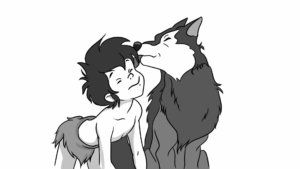
Here is an excellent lesson for Indian animation shows as well. Most of our Tv shows are influenced by Bollywood style structure, where the main protagonist is always invincible and is the epitome of perfection that we will discuss in detail in the upcoming articles.
But the success of The Jungle Book proved that you don’t need unnecessary actions, tacky gags, and larger than life protagonist to make a great show. As there was a show that shared the values of life and made an everlasting impact through an imperfect hero, who struggles like us, commits mistakes like us, learns like us. And most importantly grows like us, making it the greatest show of all time for our generation, at least in our hearts.
The Joker Movie Review: Philosophical
Joker, one of the most disturbing movies about a mentally ill patient turning into a psychopathic clown, has an underlying message for the so-called civilized society.
And that is “BE NICE TO EACH OTHER,” “UNDERSTAND EACH OTHER,” and most importantly, “LISTEN TO EACH OTHER.”
Although I won’t justify Gotham’s lunatic son’s actions, the director and writer are somewhat holding the saner section responsible for it. It’s easy to get lost in the Joker’s brutalities, creepy attitude, and insane actions.
But we need to dig deeper to comprehend its philosophical aspects, which urges us to take a step back, take a deep breath. And take a little time out of our busy lives to introspect. And stop pretending to be blind towards those who need us.
Or else, the consequences could be that we might end up creating someone like the Joker. As not everyone is strong enough to bear the pain of constant bullying, physical abuse, and failures.
The movie also highlights the pay-gap issues as the rich get richer and the poor get poorer as time goes by. Well, sure, that’s the government’s task to bridge the gap, but at the same time, a little act of kindness on our part can go a long way. And if not much, we could manage to bring a smile to someone’s face. Just a pat on the back, an affectionate hug, and a small recognization can save someone from losing their mind in the dark city of insanity and turn into a lunatic freak like the Joker.
And that is why we need someone like Batman in our society who can guide us to do good despite all the challenges life throws in front. Who teaches us to sacrifice our happiness for the greater good. And motivates us to do the morally right thing in the darkest hours.
I know we all are going through some of the other issues. And it’s too easy to lose our control and unleash the Joker within, but that way, we all end up doing more harm to each other, letting the world burn into a never-ending flame.
I think it’s time to put a hold on this loop and spread more awareness about mental illness, inequality, and emotional abuse. And all it takes is a little understanding on our part.
And I think this why Batman never killed the Joker despite everything. Because he understands him and the overall situation, which can be highlighted through one of his quotes,
“If you kill a killer, the number of killers in the world remains the same.” THINK ABOUT IT!
What do you think about the movie? Do share your thoughts in the comment section below.
CHP ONE: THE HISTORY OF INDIAN ANIMATION
“All our dreams can come true if we have the courage to pursue them.”
― WALT DISNEY.
Before we witnessed the spectacular visual effects of Bahubali before children got hooked on tv sets to watch Chhota Bheem, and even centuries before the dawn of animated films and motion cinema came into existence. Indians have figured out to enjoy the art of storytelling through an ingenious technology of projecting animated pictures on the silver screen called Tholu bommalata.
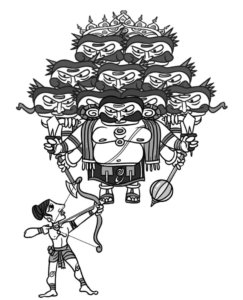
It is the traditional art of shadow puppetry that originated in the state of Andra Pradesh that enabled people to bring a hundred or more colorful mythological characters to life in the most remote village, all accompanied by virtuoso singing, engaging rhythms, and enchanting sound effects.
Then around the 19th century, during the British era, a Mumbai-based engineer Maadanrao Madhavrao Chitale, painted some events from the life of Srikrishna on slides and showed them to audiences for fun with the help of an invention called Magic Lantern that gave the impression of moving pictures. Fascinated by this new form of illusion, the father and son duo of Mahadev Patwardhan and Vinayak Mahadev Patwardhan saw a business opportunity in it. And took their show to the live audiences with the name Shambarik Kharolika.
And as time progressed, we saw the birth of technological marvels that revolutionized the art of storytelling, the motion picture camera invented by the Lumiere Brothers. This wonder machine opened the floodgates to many storytellers, and we were submerged into the depth of its potentialities.
And soon, the world witnessed its first-ever animated film created by Émile Cohl, who shot thousands of his own drawings. The film mainly consists of a stick man moving about and encountering all manner of morphing objects, such as a wine bottle that transforms into a flower that becomes an elephant.
And later on this side of the world, the pioneer of Indian cinema, Dada Saheb Phalke, created a stop motion movie using matchsticks called ‘Agkadyanchi Mouj’- ‘The Game of Match Sticks’, which is hailed as the beginning of Indian animation.
And since then, we saw the rise of many skilled and enthusiastic filmmakers and animators trying their hands in this art form. Amongst them was ‘The Pea Brothers’ made by Gunamoy Banerjee in 1934, which was the first animated film in India to get a theatrical release. Using the classical hand-drawn animation style, this movie featured the story of five peas popping out and transforming into toys that motivated many aspiring artists to pursue this form of animation.
And later in the same year, Kolkatta-based director Birendranath Sircar pulled out a film called “On a moon night” in just a month. The fascinated thing about this movie was that it was the first time that soundtrack was added into an Animated film that amused the audiences like never before.
Then on the 15th of November 1934, Animator Raghunath K. Kelkar, along with Pune-based Prabhat Film company founded by V. Shantaram, released an animated shot called Jambu kaka at Majestic Cinema in Mumbai.
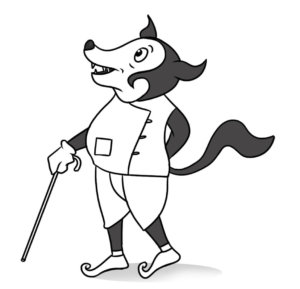
Jambu Kaka
This shot featured a humanized Jackal that gained immense popularity amongst its viewers and helped Indian animation-grow further. This eventually led to a decade full of innovative and imaginative movies, right from Lafanga Langoor in 1935 by Mohan Bhavani, “Superman Myth” in 1939 by G.K Gokhale, Bakam Bhatt by Kolapur Cinetoons, “Akash Pataal’ by Mandar Malik, and IFI’s “The War that never ends.” And with it ended the long-fought war against the colonial rule, and most of the works were lost somewhere in the pages of history.
But, not all hopes were lost, as the whole country was engulfed in the celebration of newly found independence and a sense of nationality. Gemini Studios of Chennai released a wholly Indian animation film called “Cinema Kadambam,” a series of animated caricatures of famous film stars of the ’40s made by N. Thanu.
And meanwhile, in Mumbai, Animators Gupte and Ghokle were planning to revolutionize the advertising sector and created an animated series called Rangeen Chutkiya, which held its position till 1955.
And next year, in 1956, Indian animation regained its spirit with the arrival of Disney’s Animator Claire Weeks under the Indo-American technical co-operation program. His mission was to expose Indian artists to advanced technological and creative equipment and helped to set-up India’s first-ever animation studio.
And with it, began the production of the first independent animation film called “The Banyan Deer” in the year 1957, inspired by the Jataka tales. Staying true to the intention of the Indo-US relationship, the film also resembled the mixture of Indian and American art styles. The human characters were inspired by the artistic style of Ajanta caves, while the Deer had a close resemblance to Disney’s Bambi.

This film was widely appreciated and tasted great success that helped to launch the careers of some of the best-known artists in the history of Indian Animation.
And with the success of The Banyan deer and many other short-films and shows, the next decade brought the era of experiments, trials, and errors as many bold artists tried various techniques such as time-lapse, cut-out animation, stop-motion, claymation, etc.
Many of these were used as propaganda films to promote the government’s ideology and influence the citizens to adopt a better standard of living. Soon animation began to transform from merely an art to a full-fledged career.
And with it, we saw the rise of great artists like Madhava Kunte, Ramesh Potnis, Bhimsain Khurana, who is best known for his short film Ek Chidiya Anek Chidiya, V.G Sawant, and none other the legendary Ram Mohan hailed as the father of Indian Animation and only Indian animator to receive the prestigious Padma Shri Award by the Government of India.

Ram Mohan, Legendary Animator.
And as these artists were pushing the boundaries of this art form, the technology was also evolving rapidly, and soon, we witness the arrival of computers that quickly became part of the animation industry. This new-found tool helped save a lot of valuable time, sweat, and efforts that go into making a traditionally animated film.
Yes, something as simple as a walk cycle could take as much as eighteen hand-drawn images drawn in a sequence that loop to create an animation of a walking character. The number of drawings can increase or decrease depending upon the character’s personality, timing, phase, and many, along with essential animation principles without which the animation won’t look as good as it seems that we will learn in the upcoming chapters.
But the arrival of new technology like 2D animation and especially 3D animation cut short the output time to half, and our highly skilled and talented artists were quick to adopt this new form of working style.
And with it began a new era and came to the much-needed boom in the market of the Indian animation industry. Soon we saw the rise in demand for our domestic services in the international arena due to our quality work at a much lower price.
And since then, Indian animators have continued to showcase their capabilities around the globe that can be reflected by the number of awards we have won until this time. But sadly, we found ourselves stuck under the influence of Disney style for a longer period and have been on a roller-coaster ride in its history of over a hundred years.
Even though with the rise of many great artists like Ram Mohan, V.G Samant, and the extreme popularity of shows like Chhota Bheem, Little Singham, and movies like Hanuman, Bal Ganesha, Indian animation is still struggling to earn the respect of our local audiences.
But why is that why other countries like Us, Japan, embraced this art and have managed to turn this medium into full-fledged family entertainment, whereas, in India, it is still looked down on as purely children’s genre and is ignored by almost all adults?
But more importantly, why don’t we shy away from investing our time and money into watching International films like Kung-fu Panda, The Incredibles, but won’t even think of walking into the theater to watch domestic Animated movies?. What makes Disney, Pixar, and Ghibli so successful, and what is that we need to adopt from them to grow and prosper in terms of art, style, commerce, and entertainment.
In the upcoming articles, we will explore answers to all these and many more questions and debunk the mysteries behind the success of western and Japanese animated films and the struggle behind our industry. With each article, we will look at some fundamental and deeply rooted faults in it, things that have worked for us, and things that have led to the downward slope of the art of animation.
As an animator, as a writer, and more importantly, as an audience, my intention behind writing this book is to help the new and younger generation of artists and everyone interested in the medium to take learn from our past, fix our present, and take a leap into the future. And hopefully, together, we can support our beloved art to earn a place in the hugely profitable business of family entertainment.
